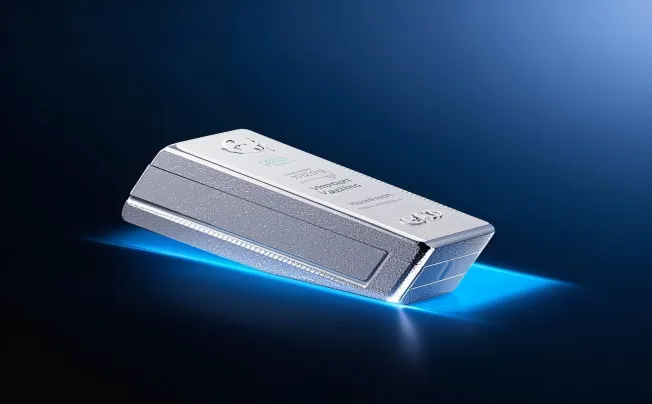Ferrosilicon, a crucial alloy composed of iron and silicon, is prominent in metallurgy and industrial applications. This alloy typically contains silicon ranging from 15% to 90% by weight and is commonly produced through the reduction of silica with coke in the presence of iron.
The Enigmatic Solubility of Ferrosilicon
Solubility refers to the ability of a substance to dissolve in a solvent, forming a homogenous solution. Understanding Ferrosilicon's solubility in water is crucial for various industrial applications and environmental considerations. Due to its unique composition and properties, the solubility of Ferrosilicon is not as straightforward as that of common salts or sugars.
The solubility of any substance in water is influenced by several factors, including temperature, pressure, surface area, and chemical composition. In the case of Ferrosilicon, its composition plays a significant role in determining its solubility characteristics. The presence of iron and silicon atoms bonded together in a specific crystalline structure affects how readily Ferrosilicon can interact with water molecules and dissolve into the solution.
Chemical Properties of Ferrosilicon
Composition and Structure of Ferrosilicon
Ferrosilicon is an alloy composed primarily of iron (Fe) and silicon (Si), with the silicon content typically ranging from 15% to 90%. The exact composition depends on the intended application, as variations in silicon content can significantly influence its properties.
Additionally, small amounts of other elements such as aluminum, calcium, and carbon may be present to further enhance specific characteristics. The alloy is usually produced through the reduction of silica (SiO2) with carbon in an electric arc furnace, resulting in a solid material that exhibits various intriguing properties.
The structure of ferrosilicon can vary depending on its silicon content and manufacturing process. At lower silicon concentrations, the alloy typically has a crystalline structure similar to that of iron.
As the silicon content increases, it forms a more amorphous or glass-like structure. This change in structure affects its physical properties and behavior when it interacts with water or other substances.
Reaction Mechanisms with Water and Other Substances
Ferrosilicon's chemical reactivity stems from its composition and structural characteristics. When exposed to water, ferrosilicon undergoes several reactions that depend on factors such as temperature, pH levels, and impurities present in both water and the alloy itself. In neutral or slightly acidic conditions, ferrosilicon reacts with water through hydrolysis reactions.
This process leads to the formation of hydrogen gas (H2) and silicic acid (H4SiO4): FeSi + 4H2O → Fe(OH)2 + H2 + H4SiO4
Silicic acid is a weak acid that can further react with water molecules or other species present in solution. The release of hydrogen gas during hydrolysis contributes to potential safety considerations due to flammability risks.
Furthermore, ferrosilicon exhibits reactivity towards certain acids like sulfuric acid under elevated temperatures. In these conditions, it reacts exothermically to produce hydrogen gas while forming corresponding metal sulfates: FeSi + H2SO4 → FeSO4 + SiO2 + H2
Corrosion Resistance and Stability in Different Environments
Ferrosilicon demonstrates remarkable corrosion resistance due to the formation of protective oxide layers on its surface when exposed to air or moisture-containing atmospheres. The presence of silicon plays a crucial role in improving this resistance as it readily oxidizes upon contact with oxygen forming SiO2 layers that act as barriers against further oxidation or corrosion.
However, ferrosilicon's stability can be influenced by factors such as temperature extremes or exposure to aggressive chemicals beyond its tolerance limits. For instance, prolonged exposure at high temperatures might lead to thermal decomposition resulting in disintegration or changes in its composition affecting overall stability.
In different environments like aqueous solutions containing salts or corrosive acids at certain concentrations and temperatures outside normal operating conditions for ferrosilicons; some degradation may occur due to chemical reactions compromising stability over time. Despite generally displaying excellent corrosion resistance even under harsh circumstances within their defined limits; careful consideration must be given regarding operating conditions when utilizing ferro-silicons across various applications where stability becomes paramount for long-term performance.
Future Prospects and Research Directions
- Emerging Trends in the Development of Advanced Ferrosilicon Materials
The field of ferrosilicon materials is constantly evolving, with researchers and industry experts striving to develop advanced variants that exhibit enhanced properties and performance. One emerging trend is the exploration of nanostructured ferrosilicon, which involves manipulating the material at the nanoscale level to achieve improved solubility characteristics.
By reducing the particle size, surface area increases, leading to a higher reactivity when exposed to water. This can potentially pave the way for more efficient applications in various industries where rapid dissolution or reaction rates are desired.
Another notable trend is the incorporation of additives or dopants into ferrosilicon compositions. The addition of certain elements can alter the solubility behavior by modifying chemical interactions between ferrosilicon and water molecules.
- Innovations to Enhance Solubility or Reactivity Profile for Specific Applications
As industries continue to diversify their applications for ferrosilicon, there is a growing need for innovations that can optimize its solubility or reactivity profile based on specific requirements. Researchers are exploring novel approaches such as surface modification techniques and functionalization methods to improve these aspects. One approach gaining attention involves surface coating or encapsulation of ferrosilicon particles with thin layers of specialized materials that can enhance their solubility in water without compromising other desired properties.
The use of polymers, organic compounds, or even certain metal oxides as coatings has shown promising results in laboratory settings. Furthermore, advanced activation methods like mechanochemical activation present opportunities for enhancing reactivity profiles.
By subjecting powdered ferrosilicon samples to controlled mechanical forces through milling or grinding processes, researchers have succeeded in increasing their dissolution rates significantly. These innovative methods hold promise not only for improving overall efficiency but also for reducing costs associated with longer reaction times.
- Collaborative Efforts Between Industry, Academia, and Government Agencies
To address the challenges associated with enhancing the solubility and reactivity profiles of ferrosilicon materials effectively, collaborative efforts between industry players, academic institutions, and government agencies are crucial. These partnerships foster knowledge exchange and resource sharing that accelerate research progress.
Government funding programs play an essential role in supporting research initiatives focused on developing improved variants of ferrosilicon. By incentivizing collaboration between academia and industry through grants and financial support programs specifically targeted at material science research studies related to solubility enhancement strategies, governments stimulate innovation within this field.
Collaborative research consortia involving multiple stakeholders from industry-leading companies also contribute significantly towards advancing the knowledge frontier on innovative approaches to enhance material properties related to solubility behavior effectively. Pooling resources allow researchers from different sectors to share expertise while utilizing state-of-the-art facilities necessary for conducting cutting-edge experiments on larger scales.
With emerging trends such as nanostructured materials, additive incorporation techniques, innovative coatings/encapsulation strategies along collaborations among experts from academia-industry-government sectors; it is anticipated that future developments will result in highly soluble Ferro silicon variants catering to specifically designed applications across diverse industries.








